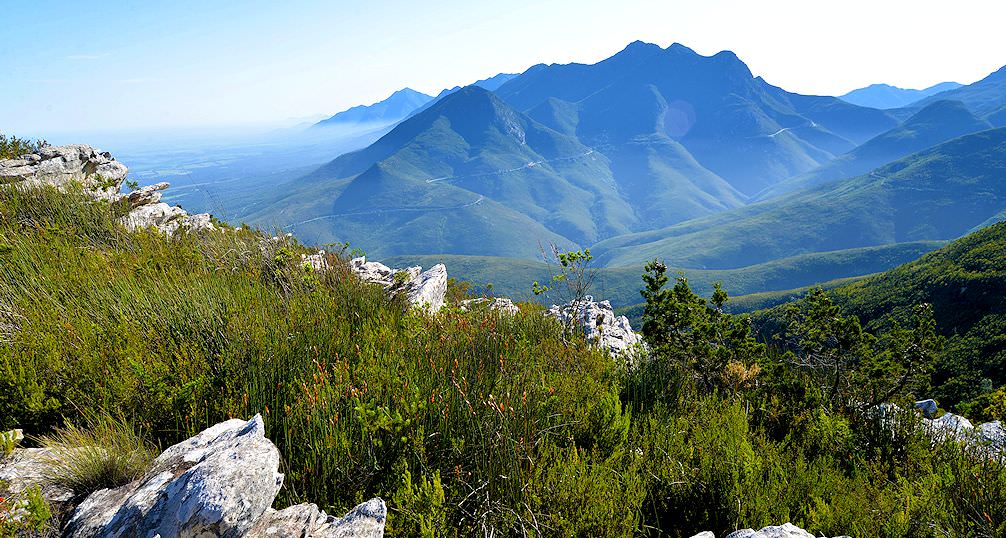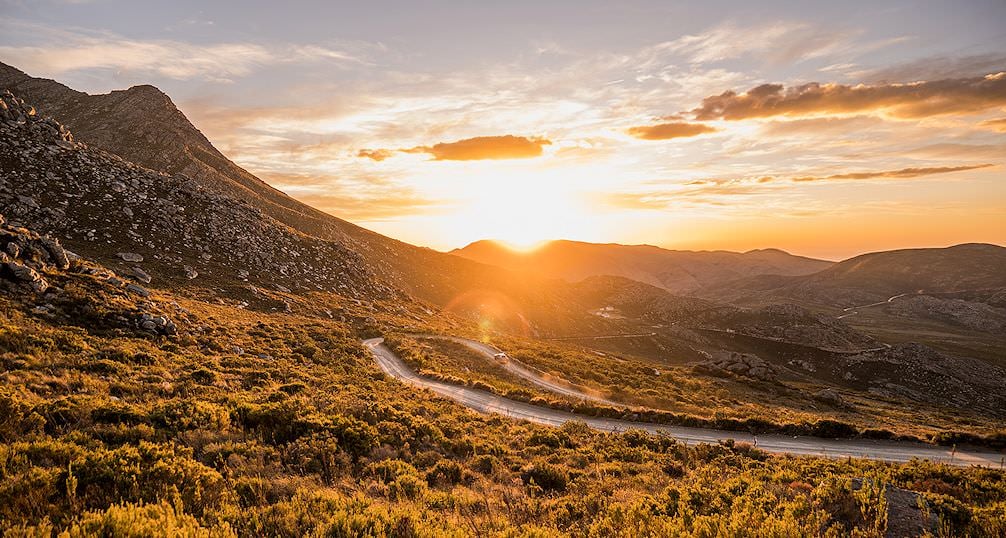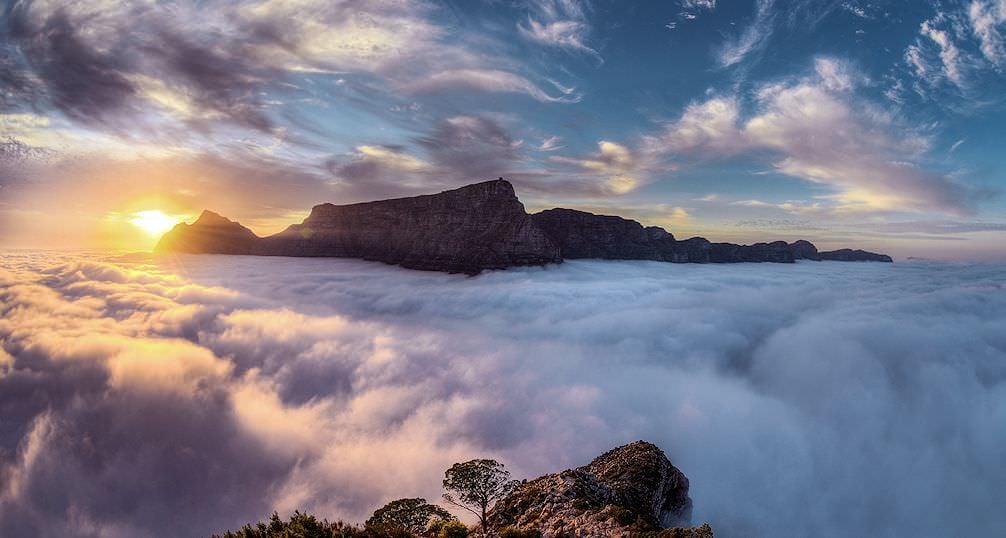-
Destinations

Top Destinations
Countries in Southern Africa
-
Our Private Tours

-
Safari Experiences

Popular Types
Safaris by Country
- Find a Trip
- About Us
- Start Planning

The Cape Fold Mountains go by many names in different parts of the province, almost as though the uninterrupted mountains between the ocean and the desert are distinct and individual.
From a scenic point of view, there is a degree of truth to this, as we will see when exploring the mountains, their valleys, and passes stretching from the Baviaanskloof in the East to the Cederberg Mountains in the West.

The Baviaanskloof is a picturesque mountain valley stretching over 200km, carved out over eons by the Baviaanskloof River that starts its journey in the dry highlands of the little Karoo and joins the Kouga River to the southeast before spilling into the ocean. Mountain species such as the Klipspringer, Mountain Zebra, and various fynbos species call the mountain slopes home, but the Baviaanskloof offers more biodiversity. Eight of South Africa’s nine biomes are represented here, from coastal forests to fynbos to grasslands, and the region boasts an impressive level of endemism—over three in ten species found here are found nowhere else. It is no wonder then that this region was declared a World Heritage site in 2004. Wildflowers and multicolored lichen paint the rock faces in what resembles an impressionist masterpiece brought to life. Yet despite all this, the Baviaanskloof remains a gem that few South Africans, let alone international travelers, ever have the pleasure of visiting. It is on the road less traveled at the gates of adventure.

Further east are the deep green hues and smooth curves of the Outeniqua and Tsitsikamma Mountains. This region gets rain yearlong and is home to one of the most extensive coastal forests in South Africa, the Knysna and Tsitsikamma Forests. There are countless activities to enjoy here, from strolls through the forest and observing the many tree, bird, and frog species to taking to the waterways that flow from the deep within the mountains to the Indian Ocean to the south, by kayak, canoe, or boat. Canopy tours through the Tsitsikamma Forest are a beautiful experience; looking over the forest from above and hearing its choir of melodies below while hiking through the region takes one to the most scenic spots.
The Otter Trail is world-famous and takes avid hikers along the coast where white sandy beaches, craggy cliffs, and ocean vistas meet. The seven passes that start in George and end in Knysna are an artifact of the endeavors of the first European settlers in the region and take you up close with some astonishing mountain views.
The Langeberg Mountains are the central mountain range of the Cape, stretching over the central part of the Province and the Overberg region, separating the lush grain fields of the south from the dry interior and the Little Karoo. These green mountains tower over many wonderful tourist towns and cultural attractions, from Swellendam and Montagu in the west to Mossel Bay in the east, with much to see, and many mountain passes to explore in between. This central mountain range is long and straight, following the ocean in a straight line across the Western Cape.

Straddling the northern border of the Little Karoo are the multicolored Swartberg Mountains, the last outpost of the fynbos, overlooking the arid Greater Karoo to the north. These mountains hold many secrets, stories, and tales of many a bygone era. The highest peak in the Cape is found here, the Seweweekspoort Peak, and a mountain valley known as Gamkaskloof. Here, settlers lived in isolation for much of the 19th century, building a self-sufficient community. Travelers can visit this lonely valley and stay in one of the original houses, enjoying the solitude and the wilderness on a hike or a drive through the mountain slopes and fynbos meadows. Prince Albert is one of the most beautiful Karoo towns, just north of the Swartberg Mountains, and perhaps one of the ideal spots from which to explore its eclectically sculpted cliffs and rock faces.
The Boland, a region that includes the towns of Franschhoek, Paarl, Stellenbosch, and Somerset West, is the mountain fortress of the South African Wine Industry. Vineyard upon vineyard covers the rolling hills of the Boland, with towering mountains visible from all around, covered with countless varieties of proteas and other fynbos, harking back to an age before man.
The Boland, too, has many incredible nature reserves, hiking spots, and nature-adventure activities to enjoy alongside wine, restaurants, chateaux-style Cape Dutch farmhouses, and art galleries. Winters here are cold and rainy, and summers are filled with pleasant and sunny days to enjoy all that this bustling region has to offer.

Table Mountain is the most famous of the Cape Fold Mountains. It has a long history with humankind, from the days when it had religious significance to the Indigenous Khoi to the protection it offered the first European traders that set up shop in Table Bay to today as the heart of the bustling city of Cape Town.
Thousands hike up its slopes, and even more visit the top of the mountain each year to see the astonishing views of the city, the Cape Peninsula, and the ocean below. It is home to several endemic species of its own and the famous Kirstenbosch botanical garden on its northern slopes. Dassies, a small, chunky creature that resembles a very large guinea pig but which is, in fact, loosely related to the elephant, can be seen basking in the sun on the boulders of Table Mountain, an island of natural beauty surrounded by the modern world.

The Cederberg Mountains are home to the country's most stark and beautiful rock formations. Layers and layers of broken-off boulders, weathered caves, and stony cliffs stand out like sculptures across the Cederberg. The Pakhuis Pass is a particularly scenic entrance to these mountains' heights and an area renowned among bouldering and free-climbing enthusiasts who risk life and limb without as much as a harness to catch them when they fall. The caves of the region, mostly carved out of pale rock that has weathered over time, are littered with rock art dating back millennia to the hunter-gatherers who called this part of the country home and painted stories of war, love, animals, and family in red, white and yellow ocher. Another secret that Cederberg and its native inhabitants kept for ages was Rooibos tea. This herbal tea, now well-known worldwide, is made from the leaves and stems of Aspalathus Linearis into a richly red-colored brew that is best boiled on the stove for some time.
The Clanwilliam Cedar, the tree for which these mountains are named, is another famous botanical resident and one of only two indigenous South African conifers.